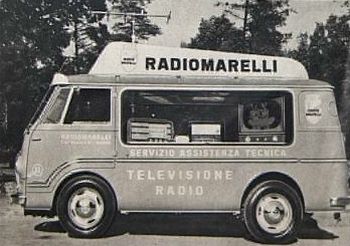 |
|
Magneti Marelli remembers its history in the
new 'telecommunications' section of
the Museo Nazionale della Scienza e della
Tecnologia Leonardo da Vinci
in Milan, which has three new
areas dedicated to 'television, telephony
and telegraphy'. |
|
|
|
Magneti
Marelli has entered the new 'telecommunications' section of
the Museo Nazionale della Scienza e della
Tecnologia Leonardo da Vinci
in Milan, which this autumn inaugurated three new
interactive areas dedicated to 'television, telephony
and telegraphy'.
Magneti Marelli is participating as a partner in the new
initiative by Italy's largest technical-scientific
museum, displaying the products of its Radiomarelli past
in the radio and television sectors, along with today's
technology in the area of automotive electronics.
Magneti
Marelli's sense of presence in the new sections of the
Museum can be found by following the thread of electronics
and telecommunications that has characterized its entire
corporate history: In addition to the main activity geared
towards automotive technologies, Magneti Marelli's roots and
vocation for consumer electronics can also be found in its
past tied to the world of radio and television and to the
highly successful and popular Radiomarelli devices.
A world which today the company transfers into the
automobile interior - through its telematic, navigation and
entertainment devices - with the aim of converging Internet,
telephony, the world of PCs, radio and the display of
information and contents with high added value for the
motorist inside the car.Founded in 1953, we are now the largest science and technology museum in Italy.
The Museo Nazionale della Scienza e della
Tecnologia Leonardo da Vinci is housed in an early 16th century Olivetan monastery and is named
after Leonardo da Vinci, the extraordinary Renaissance intellect who mastered
art, science and technology. Through the years the museum has collected and exhibited
objects, machinery and evidence that retrace the key phases of the country’s
scientific and technological evolution.
The educational activities developed in its collections and interactive labs (i.labs)
engage visitors in exciting experiences that lead to the discovery and
exploration of science. The museum's aim is to help people develop an interest in
technology, share a passion for science and discover the fascinating nature of
the past. It is also a centre for debate and research, a lively meeting place and an
active laboratory where innovative cultural projects and management
methodologies are constantly investigated.
|